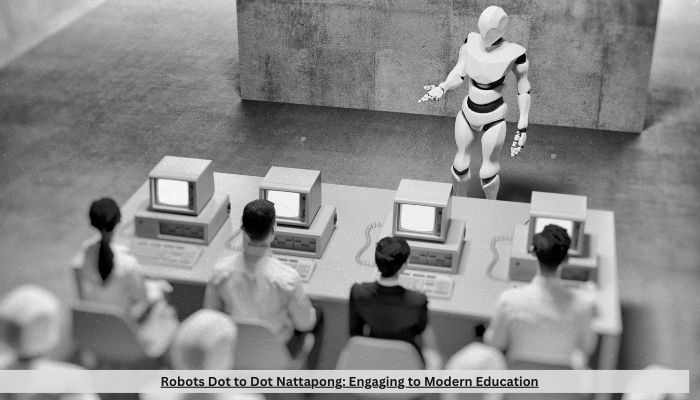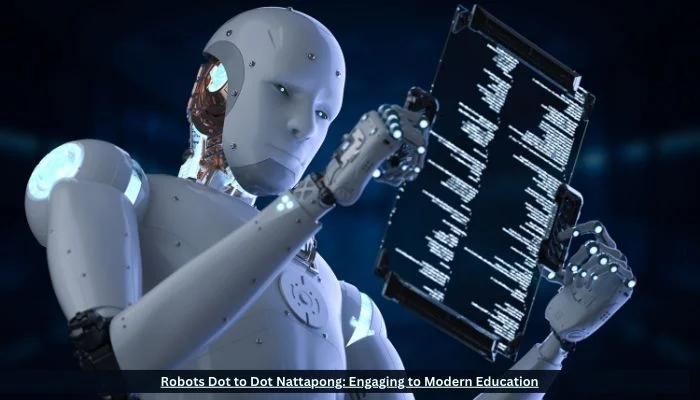In recent years, dot-to-dot activities have gained popularity not only as a fun pastime but also as an educational tool. Among the various dot-to-dot formats, Robots Dot to Dot Nattapong stands out. This unique approach combines the classic dot-to-dot activity with modern-day robotics, providing an engaging way to introduce technology and problem-solving to learners of all ages. But what exactly is Robots Dot to Dot Nattapong, and why has it become a favorite among both educators and hobbyists?
Understanding the Importance of Robots Dot to Dot Nattapong
Robots Dot to Dot Nattapong serves a crucial role in blending entertainment with education. The concept revolves around connecting dots in a sequence that eventually forms the image of a robot. While the activity itself may appear simple, it is designed to teach essential skills like pattern recognition, motor skills, and critical thinking. Beyond just connecting dots, participants are subtly introduced to the basics of robotics, igniting interest in STEM (Science, Technology, Engineering, and Mathematics) fields from an early age.
How Robots Dot to Dot Nattapong Works

At its core, Robots Dot to Dot Nattapong functions much like traditional dot-to-dot puzzles. The participant is presented with a series of numbered dots, which they must connect in order to reveal an image. However, in this case, the image is always related to robots—ranging from simple, cartoon-like depictions to more intricate and detailed mechanical designs. Some advanced versions even incorporate basic coding concepts, guiding the participant through creating a basic “robot” following a set of instructions. As a result, this activity not only reinforces cognitive abilities but also introduces fundamental robotics principles.
Read Also: GU iCloud: Features, Benefits, and How to Get Started
Key Features of Robots Dot to Dot Nattapong
- Varied Difficulty Levels: Robots Dot to Dot Nattapong offers activities tailored to different age groups and skill levels. Simple designs are ideal for younger children, while more complex puzzles can challenge older learners.
- Interactive Learning: Some versions of Robots Dot to Dot Nattapong come with digital platforms, where users can interact with their completed designs. For example, a drawn robot might move or perform actions once fully connected.
- STEM Education Integration: These dot-to-dot puzzles serve as a bridge to more advanced concepts in robotics and coding, making them valuable tools in classrooms focused on STEM education.
- Artistic Appeal: The puzzles are not just educational; they are also visually stimulating, encouraging creativity in both children and adults.
- Portable and Accessible: Whether in book form or as a digital app, Robots Dot to Dot Nattapong is widely accessible and can be used in various learning environments, from classrooms to homes.
The Evolution of Dot-to-Dot Activities

Dot-to-dot activities have a long history, dating back to simple number sequences that would reveal a hidden picture once connected. Traditionally, these puzzles were used to entertain children while subtly teaching them number sequences, counting, and fine motor skills. Over time, dot-to-dot puzzles evolved, incorporating more complex images and educational themes. With the advancement of technology, dot-to-dot activities like Robots Dot to Dot Nattapong have taken this simple concept to new heights, blending it with digital interactivity, robotics, and even coding.
Origins of Dot-to-Dot Puzzles
Dot-to-dot puzzles have been around for centuries, with early versions tracing back to the 19th century. Originally, they were simple activities designed to teach children numbers and counting, where participants would connect numbered dots to reveal an image. These puzzles became a popular form of entertainment in educational books, blending fun with learning. The simplicity of the concept, combined with its educational value, made dot-to-dot an enduring favorite, particularly for children learning basic sequencing and motor skills.
Dot-to-Dot in Early Education
In the early stages of education, dot-to-dot puzzles played an essential role in helping young learners develop foundational skills. By connecting the dots, children were able to practice counting, recognize numbers, and improve their hand-eye coordination. Teachers and parents alike embraced these puzzles as an effective tool to introduce concepts such as sequencing, spatial awareness, and fine motor control in a playful and engaging manner. Over time, dot-to-dot became a staple activity in preschool and elementary classrooms around the world.
Transition from Paper to Digital Formats
With the rise of technology, dot-to-dot puzzles made a natural transition from traditional paper-based formats to digital platforms. Educational apps and interactive games now offer virtual dot-to-dot activities, allowing users to connect dots on tablets or computers. This shift has not only made the puzzles more accessible but also introduced new features like animations, sound effects, and even themed puzzles that go beyond simple line drawings. The digital version of dot-to-dot retains the core educational benefits while adding an interactive element that appeals to modern learners.
Read Also: Pxindianoil.in: Registration, Login, and Features
Educational Benefits of Robots Dot to Dot Nattapong
Robots Dot to Dot Nattapong offers numerous educational benefits:
- Enhances Problem-Solving Skills: By following the numbered sequences and completing the puzzle, participants practice solving problems in a structured way.
- Develops Fine Motor Skills: Connecting dots requires precision, especially as the complexity increases. This improves hand-eye coordination and fine motor control.
- Encourages Creativity: While the end result of a puzzle may be predefined, the way learners approach and complete it fosters creativity. They can also explore further by adding their unique touches to the completed designs.
- Introduces Robotics Concepts: The robot-themed puzzles introduce basic robotics concepts in a fun, non-intimidating way. By engaging with robots in puzzle form, learners develop an interest in the mechanical and computational aspects of technology.
- Improves Concentration: Completing a dot-to-dot puzzle requires focus and attention to detail, which helps improve concentration skills over time.
Categories and Levels of Robots Dot to Dot Nattapong

Robots Dot to Dot Nattapong is not a one-size-fits-all activity. It comes in a variety of categories and levels to cater to different needs:
- Basic Level: Designed for beginners and younger children, the basic level includes simple robot designs with fewer dots and more straightforward sequences.
- Intermediate Level: As learners advance, they can take on more complex puzzles that involve intricate designs and might introduce additional challenges such as coding sequences or logic puzzles.
- Advanced Level: For older students and adults, advanced puzzles include highly detailed robot designs that require significant concentration, patience, and problem-solving skills. Some versions may integrate with software that allows the user to animate or program the robot they have created.
- Digital and Interactive Levels: In addition to the traditional paper format, many digital versions of Robots Dot to Dot Nattapong offer interactive features. Users can connect dots on a tablet or computer, with the robot performing actions once completed.
Challenges and Limitations of Robots Dot to Dot Nattapong
While Robots Dot to Dot Nattapong is a fantastic educational tool, it does have some limitations:
- Limited Appeal to Non-STEM Learners: While it effectively introduces robotics and technology concepts, it might not appeal as much to students uninterested in STEM topics.
- Repetitive Nature: For older or more advanced learners, the repetitive nature of connecting dots could become monotonous without additional challenges or variation.
- Access to Digital Tools: Although the paper-based versions are widely available, some of the more interactive digital versions may not be accessible to all learners due to a lack of technology or internet access.
Read Also: XXTech.Online Blockchain: Revolutionizing Digital Transactions
Conclusion
Robots Dot to Dot Nattapong is a brilliant blend of traditional dot-to-dot activities and modern technology. By introducing robotics in a fun, interactive way, it engages learners of all ages while teaching critical thinking, fine motor skills, and basic robotics concepts. From its origins as a simple counting exercise to its current form as a STEM-friendly tool, this activity has come a long way and continues to evolve. Whether used in classrooms or at home, Robots Dot to Dot Nattapong offers both entertainment and education, proving that learning can be both fun and engaging.
FAQs
What age group is Robots Dot to Dot Nattapong suitable for?
Robots Dot to Dot Nattapong offers activities suitable for a wide range of ages, from young children to adults, with varying difficulty levels.
Can Robots Dot to Dot Nattapong help with STEM education?
Yes, it introduces foundational concepts in robotics and coding, making it a valuable tool in STEM education.
Are digital versions of Robots Dot to Dot Nattapong available?
Yes, there are digital versions that provide interactive experiences where users can animate or program their completed robot designs.
Is Robots Dot to Dot Nattapong limited to educational use?
While it’s a great educational tool, it also serves as an enjoyable pastime for those interested in robotics and creative activities.
What are the main benefits of Robots Dot to Dot Nattapong?
The main benefits include improved problem-solving skills, fine motor skills, creativity, and a basic introduction to robotics and coding concepts.
